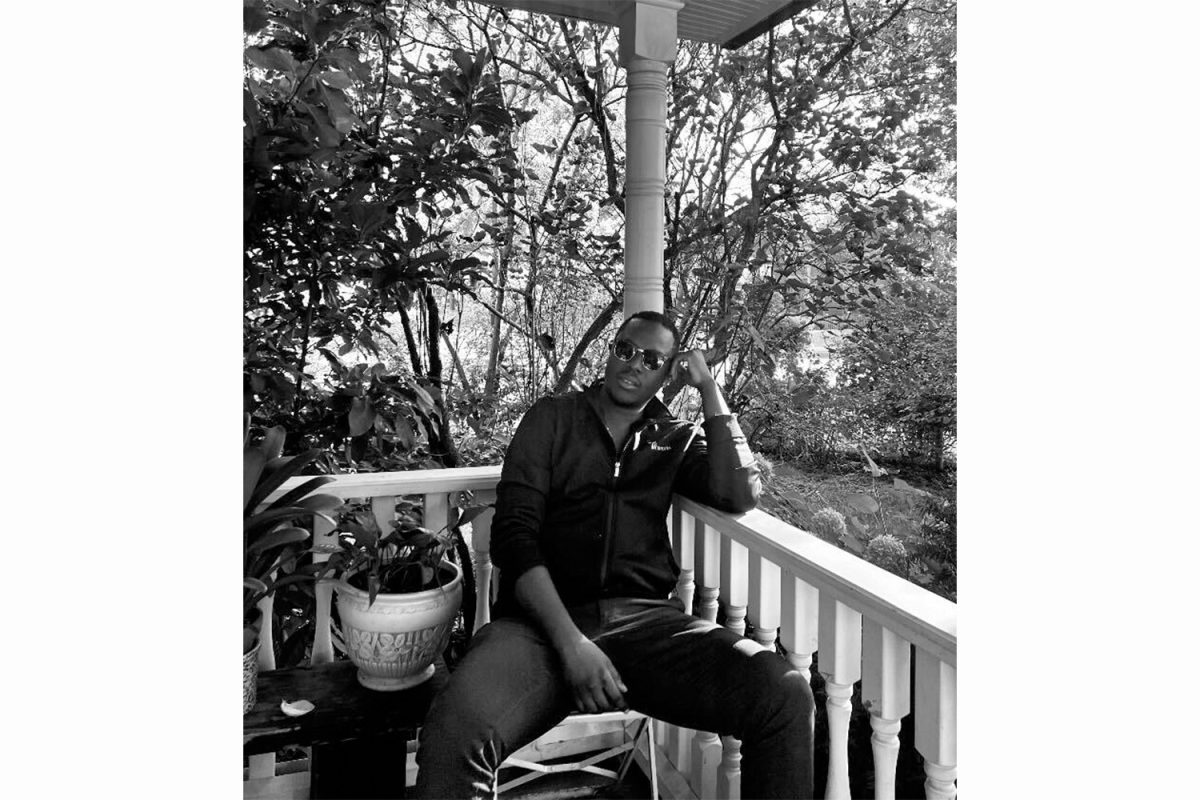
You can feel the adrenalin coursing through your veins as the sound of the fiddle gets quicker and quicker until its pace matches your racing heart. Fast. So fast you can imagine the fiddler’s bow coursing back and forth and back again across the instrument’s tight strings while the dancers leap across the stage. They push away the air and stretch their arms and legs as if trying to mark their territory — protect it from an invisible enemy.
But unexpectedly, the music slows. The fiddle moans long, sad shrieks as if crying for the dancers, whose moves become more introverted. Rather than fighting their concealed foe, the fight becomes against themselves as they cross their arms over their bodies and shrink to the floor.
This polarized emotional journey is meant to mirror the experiences of sexual-assault victims around the world. University of Iowa dance Associate Professor Eloy Barragán wants to convey the traumatic odyssey a sexual-assault victim goes through with his dance piece "45 Seconds: Cuando el Silencio Grita" (When the Silence Screams) in the Faculty/Graduate Concert this weekend.
According to the 2010 National Intimate Partner and Sexual Violence Survey, one in five American women will experience attempted or completed rape in their lives, and Barragán wants to draw more public attention to the problem.
The concert will open today at 8 p.m. in North Hall’s Space/Place and run through Saturday. Admission is free for UI students, $6 for youth and seniors, and $12 for the general public. Many of the pieces in the concert are dedicated to bringing awareness to other human-rights issues.
For Barragán’s piece, he invited two victims of sexual assault to speak to his dancers about the emotional process they experienced after being assaulted. The object of the piece is not to paint a literal picture of what happens to a woman who is raped but rather give physical life to those emotions and thereby spread awareness.
"We’re just translating or interpreting their emotions and their experiences," he said. "As a male, I think it would be disrespectful to [speak for] the women victims who have been abused."
The dancers, clothed in flowing, neutrally colored skirts and tightly fit tank tops, pull at their costumes and vigorously brush the skin of their arms as they flit past one another on stage in attempt to convey the unclean and shameful feelings that victims battle.
UI senior Shelby Vcelka, one of the victims who spoke with Barragán and his students, said during the attack, all she felt was pure terror, but the aftermath of the event was wrought with shame and depression.
"It just feels like you’re trapped at the bottom of a well, and there’s no way to get out," she said. "Everything you do becomes a chore."
Barragán also wants to help eradicate the questioning of victims. He said all too often the first questions asked following a sexual assault concern where the victim was, what she was wearing, or if she was drinking.
Vcelka said she wasn’t believed by the police when she reported her attack because the attacker didn’t "look like a rapist." She said the phrases "boys will be boys" and "she was asking for it" are frequently accepted as valid excuses for rape.
"Quite frankly, that’s offensive," she said. "Men and women should both be offended by that kind of talk, because it suggests that women are just objects that use their sexuality to provoke a response, and it suggests that men are incapable of controlling themselves and their first instinctual reaction is to rape."
The piece also contains two "images" in which the dancing yields to a theatrical portrayal of the emotions of a victim. Vcelka participates in one of the scenes in which she stands in a bathtub with her bare back to the audience, softly rubbing her skin as if showering in the warm, invisible water, washing away the shame. Or the memories.
The second scene touches on the issue of domestic violence. One of the dancers is wrapped in Saran Wrap — meant to symbolize the kitchen and the home. As she begins to tip to one side, the other dancers hold the woman up by pulling on the wrap, providing suggestive symbolism about the binding nature of abuse.
Delaney Dixon, assistant executive director of the Domestic Violence Intervention Program, has worked with the dancers to help them convey the emotions of victims she deals with regularly. She, echoing the Vcelka’s beliefs, said the American culture devalues the trauma victims suffer.
Barragán’s art can be one step in the right direction to opening up a public dialogue about this issue.
"[Dance] transcends language," Dixon said. "It transcends socieconomic status or political party, and it strikes a chord with you, and it moves with you. And that’s really what this is about, to ask why [we accept this behavior.]"
This piece is pertains particularly on the UI campus because the fifth sexual assault this academic year was reported a little more than a week ago, on Feb. 3.
"It’s devastatingly sad that these things are happening in our backyard and all my students here can be exposed to that, and so I wanted to create awareness," Barragán said.
While sexual abuse is not among the highest reported crimes on campus, it is growing. In 2009, only one sexual assault was reported to the UI police. In 2012, that number jumped to seven.
"We’re hoping that more victims are feeling freer to come forward and report their stories," said Chuck Green, the assistant vice president for the UI police. "We think predators are hoping that no one reports their crime. We think it’s very, very important that victims realize this is not their fault."
Clare Cowley, the second victim to speak with Barragán and his dancers, said undergoing a sexual assault changed her soul and direction of her life forever and Barragán’s piece extracts that truth beautifully.
"You are totally alone and you are totally judged by it," she said. "It’s just such a weird assault to have to go through. Most people don’t believe you unless your face is bashed in. [Barragán’s] piece shows that, represents the loneliness."
She said she agreed to help him with his piece because she wants all women to know sexual assault can happen to anyone under many different circumstances, not just in a dark alley on a drunken night.
"I’m honored," she said. "It is beautiful. I was speechless [after seeing it], and they do paint a perfect image of the journey of that experience."
DANCE






